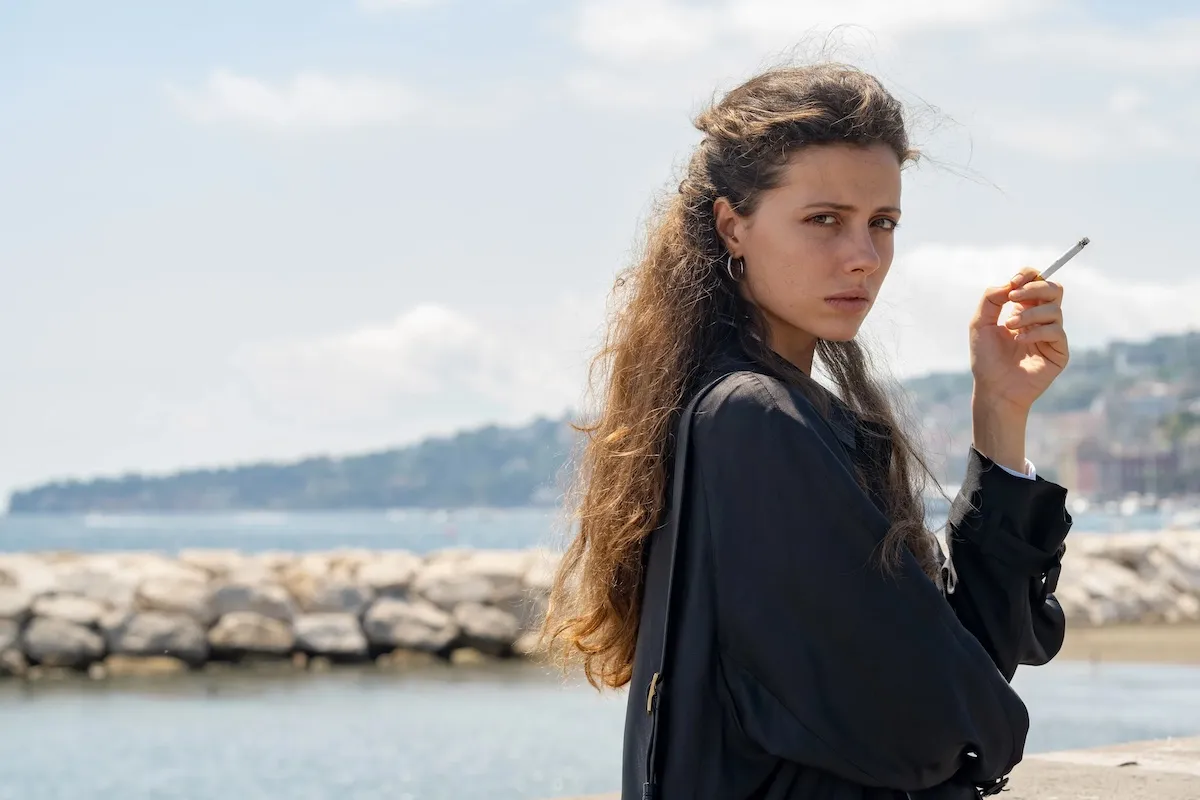Cannes 2024
Parthenope
by Federico Pontiggia
“She resembles me,” but who is she? Naples or Parthenope, the siren turned woman, and remained the sea, for whom Cocciante, Paoli, and Sinatra sing? Paolo Sorrentino returns to Naples after The Hand of God, and after that private plunge comes the public (and subtly, unfailingly biographical) summary, with grief for a passing of the torch: there his (parents) died, here a brother, who fatefully “already knew everything.”
It is difficult to be Sorrentino because one can avoid repeating oneself but not being oneself, and the restart from the memoir, from the sensitive and increasingly intimate data, is not, like the fool he keeps fixating on, for the creatures.
Thus the fifty-year-old Sorrentino, in competition at Cannes 77, tempers his brilliance, which contains the risk of skill and ableism, and ties himself, like Ulysses, to the main mast of a film that is grand and God, that is beauty and hand: yes, mindful of the cinematic corpus that counts him, and mindful of the anthropological corpus of the city that feeds him.
“I have been sad and frivolous, determined and listless, like Naples,” and thus the woman in addition, and thus the consequences of love, and thus youth and – the original indication was spurious, Napul’è – this must be the place.
If “anthropology is seeing,” if Céline still the guiding spirit in the epigraph: “Of course life is huge. You get lost everywhere,” Parthenope’s journey from the Fifties to now, from Naples to Trento and back, in the certainty that it is “impossible to be happy in the most beautiful place in the world,” which is not Trento, in the aporia that “the truth is unspeakable” – but ineffable? – how can it be told, if not in the Socratic pleasure principle of “I know nothing, but I like everything?”
Sorrentino thus had the desire, necessity, even urgency to find a sentient body, a disarming smile under curious and even investigative doe eyes: “It was all foreseen,” to sing it with Cocciante, and the foreseeing was Celeste Dalla Porta (doesn’t she perhaps resemble the very young Gigliola Cinquetti?), who is Parthenope capable of everything, but good for nothing.
A fault test, hers, in the presence of the Faraglioni, in The Sign of Venus chez Risi and of Matarazzo’s Cerasella, which moves and solidifies in fraternal mourning, where at the end of the night, in lethal rather than lustrous waters, lies the confusion “between the irrelevant and the decisive,” which are then the terms within which, without continuity solution, Sorrentino’s cinema wrestles.
Literarily there’s John Cheever, a moving Gary Oldman, but even more Dudù La Capria of Ferito a Morte and Curzio Malaparte of La pelle, thus lows and degradation, prostitution and inter-Camorra couplings, disfigured agents and divas from the North, the actress shortcut and the form vice, the professor, Marotta (great Silvio Orlando), who with Billy Wilder “just needs to be one lesson ahead of the students,” and the university where, needless to say, “you come already pissed and shitted.”
Parthenope goes, siren and even more Odyssey (and Odysseus is inevitably Sorrentino), strides the silence that “in the beautiful is a mystery, in the ugly a failure,” dodges loves, those “of youth that served nothing,” and love, which “is not manageable, from Jesus to singers they all try to tell us how to cope,” and finds herself resembling herself, woman and city, becoming a miracle of the scene – The Neorealism which Sorrentino has always shunned – and a miracle of the obscene, with the allure of Achille Lauro and the concupiscence of Bishop Tesorone (Peppe Lanzetta, demonic and iconic), who rummaging in her intimate parts will achieve the failed miracle of San Gennaro in church.
Here, and in depth, La Capria: “The Neapolitan who lives in the psychology of the miracle, always waiting for an extraordinary event to suddenly change his situation. The ambiguous aspect of the humanity of the Neapolitan with its antithesis of misery and comedy, of life and theater. The two Naples, one the staging and the other the true one.”
But how is Sorrentino?
Catalyzed and directed the epiphany of Celeste Dalla Porta, an inescapable merit, he ascribes a first part of the film wisely and sparingly dazzling, shot within modesty and empathy, then he lets himself be taken by despair for the audience, to whom alas he will hide nothing, and for himself, compelled not to repeat himself remaining himself, thus Tesorone, menstruation and masturbation in the name of God, thus Marotta’s son, who is water, salt and Homeric sea monster (“And anyway God does not love the sea…”), thus hyperbole and grotesque, and the disturbing that shortens the film.
“Those in love realize it sooner or later,” and cinema continues to return Sorrentino’s affection abundantly, but Parthenope’s return to the future so mixed with the past, so state of the art (the technical excellence, and technological for the “monster,” is sensitive yet never boastful in the film) and so meta-cinematic, played all on seeing/power (it opens with “You have dull eyes”), reminds us how it is “very difficult to see because it is the last thing you learn when everything else begins to fail,” but still easy to film because it is the last thing you forget when everything else begins to fail.
Yes, Sorrentino is also mortally wounded: “Is it possible that everything happens like in a film, that you see it and it seems like something is happening right then, and instead the film was shot in a different order, and everything is still in the roll of time? Yes, it is possible, it is possible.”
Cinematografo, May 23, 2024





